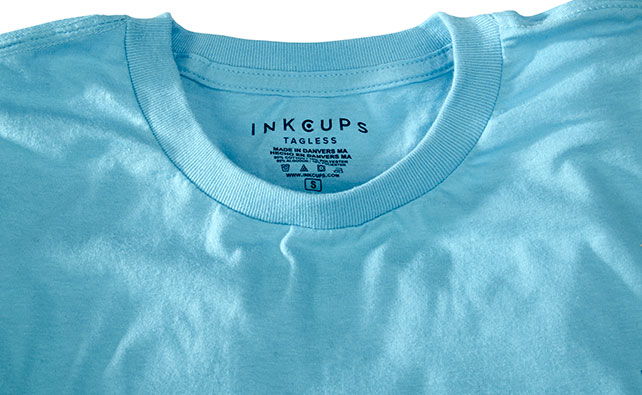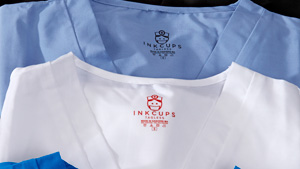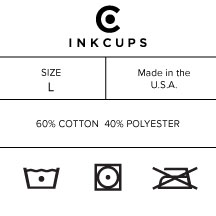- Equipment
- Inks & Supplies
- Services
- Applications
- Tagless
- Resources
- About Us
- Contact Us

What is on a shirt label? A lot more than you might think. Shirt labels contain much more than size information that is regulated by the garment industry and government. Here’s what it all means:
 Before we dive into what is included on a shirt label, it is important to know what they are. Shirt labels are on every piece of garment you purchase from clothing to pillowcases. Labels contain the brand name, shirt size, country of origin, fiber content, and care information. These labels are typically applied to the garment by tagless pad printing, heat transfer, and sewn-in labels.
Before we dive into what is included on a shirt label, it is important to know what they are. Shirt labels are on every piece of garment you purchase from clothing to pillowcases. Labels contain the brand name, shirt size, country of origin, fiber content, and care information. These labels are typically applied to the garment by tagless pad printing, heat transfer, and sewn-in labels.
According to the Federal Trade Commission and U.S. Customs and Border Protection, most textile and wool products must have a label listing the fiber content, country of origin, the identity of the manufacturer or another business responsible for marketing or handling the item ans care instructions. The three major laws that these organizations enforce are The Textile Fiber Products Identification Act, The Wool Products Labeling Act and The Fur Products Labeling Act. Simply put, this information must be applied to your garment.
business responsible for marketing or handling the item ans care instructions. The three major laws that these organizations enforce are The Textile Fiber Products Identification Act, The Wool Products Labeling Act and The Fur Products Labeling Act. Simply put, this information must be applied to your garment.
What type of garments must follow these requirements:
Clothing, except for hats and shoes • Handkerchiefs • Scarves • Bedding, including sheets, covers, blankets, comforters, pillows, pillowcases, quilts, bedspreads and pads (but not outer coverings for mattresses or box springs) • Curtains, and casements • Draperies • Tablecloths, napkins, and doilies • Floor coverings: rugs, carpets, and mats • Towels, washcloths and dishcloths • Ironing board covers and pads • Umbrellas and parasols • Bats or batting • Flags with heading or that are bigger than 216 square inches • Cushions • All fibers, yarns, and fabrics, but not packaging ribbons • Furniture slipcovers and other furniture covers • Afghans and throws • Sleeping bags • Antimacassars (doilies) • Hammocks • Dresser and other furniture scarves
Garments often have icons on the bottom that tell you how to care for your item. Often, these contain washing instructions at a particular temperature. Should you wash it in a machine or by hand? If you can wash it by machine, what temperature should the water be? Can you use bleach on the garment? If yes, what kind of chlorine or non-chlorine bleach? Should you dry the garment in a machine or hang-dry? What temperature should you dry it at? Can you iron the garment and at what temperature? Lastly, does the garment require professional cleaning?
While this task may seem a bit daunting, the FTC has made an easy-to-use document outlining generic names for manufactured fabrics. This can be found under ISO 2076: 2013.
There are many different ways to apply shirt labels but the most important thing to do before you decide to private label is to do your research. All information outlined above is according to U.S. standards. This provides a good basis however, each country has their own regulations around what needs to be included in a label. For example, the country of origin is mandatory in the U.S. but it is optional in Austria. This is important for those customers who are selling product to a variety of countries. That being said, your labeling method should be flexible enough to change with the needs of your different products as well as your changing customers.
In general, there are 4 methods of labeling products and 3 of them are considered “tagless”
Learn more about what is tagless label printing
Back to Blog Home
Add Your Comment